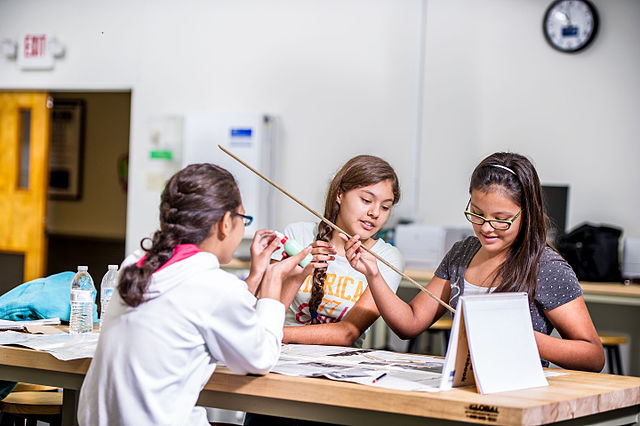
Photo by Mojpe, Pixabay.com.
“When it comes to feeding your kids, everyone’s a critic,” warned my friend Lori.
Sure the food police may be creeping around cafeteria corners and leering at grocery carts, but I’ve come to realize that when it comes to kids and food, there are a lot more hypocrites than critics.
I, for one, am happy when my son eats at all.
Can he really be the only kid in the United States who has never — not a single day in his young life — managed to down the federally-recommended three servings of vegetables, two servings of fruit and two servings of milk per day?
And I’m told, by other concerned parents who are apparently better able to shove food into their children’s small orifices, that when he turns seven he’ll need even more fruits and vegetables. At this rate, he’ll need a broccoli I.V. and brussel sprout drip or he’ll never be able to catch up
Who are these kids that are eating all of these fruits and vegetables? I’ve certainly never met them.
I called the USDA, and they put me in touch with the five-year-old boy who actually follows all of their guidelines. His name is Oliver Q. Stump, and he lives in Denver, CO. He’s in great health, reading at a fourth grade level, and is exceptionally well mannered. However, I found him to be an exceedingly dull conversationalist.
Have a Butterfinger, Oliver. You need to lighten up.
The rest of us can only try. At their Valentine’s Day party, my son’s kindergarten class not only had cookies and cupcakes on the sign-up sheet, but also fruit and vegetables.
I was impressed. Unfortunately, none of the produce actually made it to the party, and I was surprised to find that when the kids opened their Valentine’s cards, at least half of them contained candy.
Were these the same moms that complained about unhealthy croutons in the school’s salad bar?
I had been buying red and pink foil chocolate concoctions for weeks, but it never would have occurred to me to share them with my son, let alone his classmates — and it’s not just because I don’t share chocolate.
While I’ve been following the progress of “healthy chocolate” research at Mars Inc. for years (according to the New York Times, dark chocolate Dove bars are now loaded with more cardiovascularly-friendly flavanols than many green teas), I know better than to make five-year-olds into lab rats.
I prefer my selective scientific gullibility to work only in my favor, not against the integrity of my son and his friends.
“I want to teach my kids that carrots are just as much of a treat as M & Ms,” said my friend Jody.
Good idea, though there’s a reason they never made Willy Wonka and the Rutabaga Factory into a movie.
If it actually worked, there would be a bunch of orange-tinted kids on the playground instead of a bunch of fat kids. For those of you who didn’t get the memo, or have been living under a rock for the past decade, this will be big news: Kids are eating too much junk food and not getting enough exercise.
In other words, they’re acting like adults.
“Can we go to McDonald’s for dinner, Mommy?” asks my son. “They have salads.”
This is how he tries to sell me on McDonald’s, with the temptation of a 12,000 calorie salad — for me. Nonetheless, “Would you actually eat something if I take you there?” I plead.
That’s how low the bar can drop in our house sometimes.
My son, who is five and weighs less than his three-year-old cousin, is almost never hungry. That is, unless he’s sucking up to Grandma or it’s time to go to bed. Then he suddenly gets an appetite.
Anyone who’s ever met me knows this is clearly not genetic.
Ever look up “food issues” in a psychology journal?
My mom was the one who gave me Tab in my fourth grade lunch box and gave out pencils on Halloween.
My dad was the one who made me the top seller every Girl Scout cookie season. He would eat them before I could even make the rounds of the neighbors, a weakness later discovered by the SBCC women’s volleyball team, who made a fortune by storing their fundraising candy bars in his office one year.
My husband is the tall, skinny guy who, after years of cutthroat “eat all your vegetables” contests with his siblings, has not had anything green pass his lips (other than a beer on St. Patrick’s Day) since he left home for college.
And I am the one who rejoiced at the healthy kids meal we recently had at Bubba Gump’s in Long Beach, which included carrot sticks and celery with the chicken strips and fries.
My heart went pitter-patter when Koss actually ate a carrot.
So what if he mistook it for a French fry, he still swallowed.
Like I said, the bar is low.


